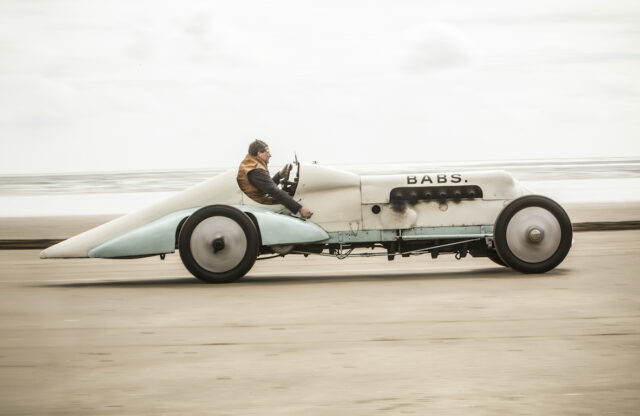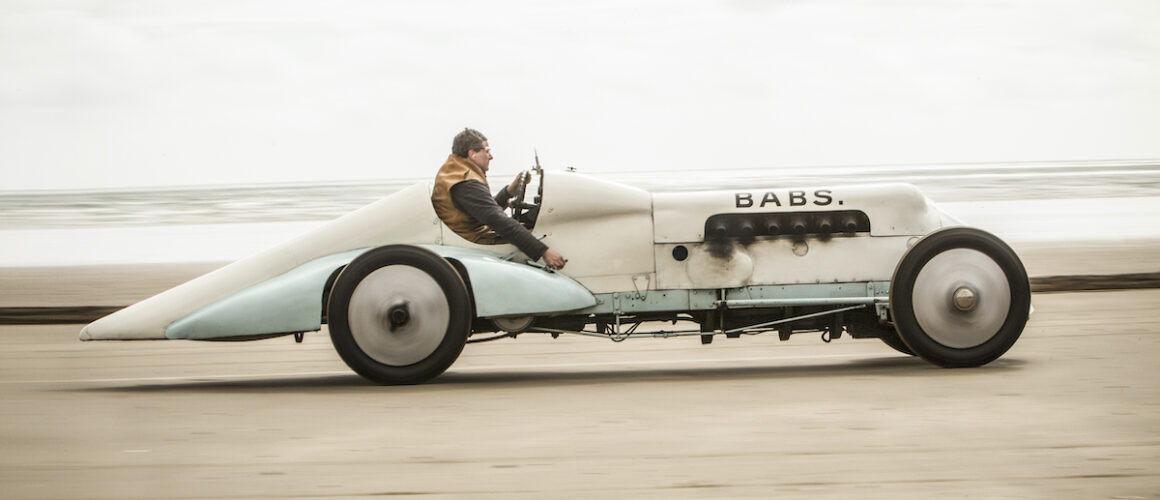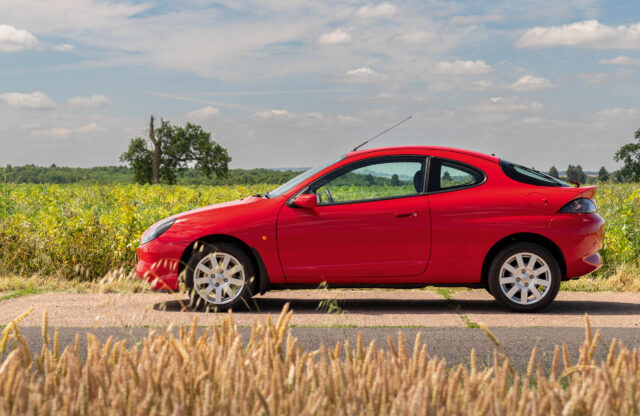After being buried for 42 years following a fatal crash, 27-litre record-breaker ‘Babs’ was dug up and restored. Octane was there as it returned to the scene of its last run
When my father first dug up Babs, his intention was never to restore it,’ says Geraint Owen. ‘He would have been quite happy just to get the crankshaft out and have it put on display in a museum. It was only when he realised the scale of what he had got that his attitude changed. He could make Babs look like a car again – and if he could do that, it wouldn’t take a lot more to get it running.’
Geraint is talking about his father’s excavation of 1927 Land Speed Record car Babs from the dunes behind Pendine Sands, Wales, in 1969, where it had been dumped upside down in a hole 42 years earlier. The car had crashed during a high-speed run, killing its driver, the engineer and racer JG Parry Thomas, and had then been unceremoniously buried by shocked friends and locals. It would rest there, largely forgotten, until Owen Wyn Owen set about rescuing it in April 1969.
‘In the 1960s, Donald Campbell was very much the man of the moment, and my father thought that Parry Thomas deserved to be remembered,’ continues Geraint. ‘Thomas was a record-breaker, in 1926 the most successful racing driver at Brooklands, and he was also a self-made man who got where he did through being an engineer rather than simply being rich enough to buy his way there. Yet all his cars had disappeared and there was nothing to remember him by.’
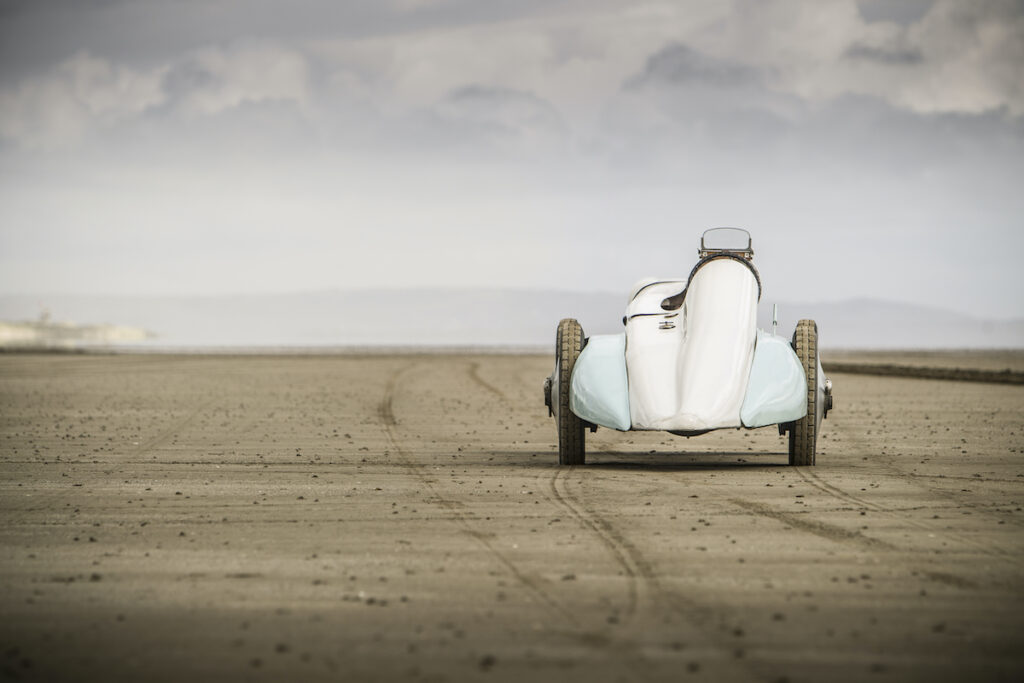
IT TOOK UNTIL the early 1980s for Owen Wyn Owen to fulfil his ambition of restoring Babs. Since then, the car has been seen at Goodwood and other classic events, and it’s normally on display in the small museum that overlooks Pendine Sands. Demonstration runs on the long, flat expanse of beach that stretches inside Carmarthen Bay are rare, but earlier this year Geraint proposed to hold a low-key event at its spiritual home, to mark 90 years to the day since Parry Thomas set new Land Speed Records of 170.6mph for the flying mile, and 171.09mph for the flying kilometre. There’d also be a collection for Great Ormond Street Children’s Hospital, reprising Parry Thomas’s own fund-raising efforts with Babs for this institution. The shy and sometimes socially awkward Thomas had a special affinity with children, and the silver lining to his awful death was that a public collection funded a child’s cot at Great Ormond Street, and another at the Belgrave Children’s Hospital.
Octane’s writer and photographer turn up a good hour before Babs is due to appear, and yet there are already spectators’ cars lined up on the sand in anticipation, their occupants sheltering from the biting wind. By the time Geraint, his wife Lottie, small son and dog have pulled up with Babs on a trailer behind their 4×4, the crowd has swelled dramatically, such is the magnetism that Babs and the tragic story of John Godfrey Parry Thomas still hold for many enthusiasts.
Geraint is well-known to many of these worshippers. Naturally extrovert, a familiar face in Historic and VSCC racing, and a skilled engineer – he is a senior lecturer in Engineering Design and Automotive Engineering at the University of Bath – he’s never happier than when tinkering with a piece of vintage machinery. There’s a hard core of Morgan three-wheeler and Frazer Nash men among the onlookers, and Geraint is in his element as he answers questions from his knowledgeable entourage while prepping Babs for take-off.
The starting procedure is straightforward enough. About an hour before firing Babs up, Geraint pours a litre or so of oil into the cam-boxes of the 27-litre Liberty aero engine to ‘wet’ the top end, an eggcup-full at a time – ‘It takes a while because I only have one funnel!’ he admits. Just ahead of the run, he primes the engine by squirting neat petrol into the inlet manifolds, retards the ignition, and then presses the button. In 1927, Babs had to be push-started, but Geraint has added an electric starter
to avoid stressing the transmission. More accurately, he’s added two electric starters:
‘Austin Maestro diesel van starters were the only ones I could find that turned the right way, and they’re arranged at the 3 o’clock and 9 o’clock positions,’ he explains. ‘Fitting them involved drilling just one extra hole in a bracket attached to the chassis, and now you only have to push a button and the engine will start – although it’s a bit marginal when everything’s cold!’
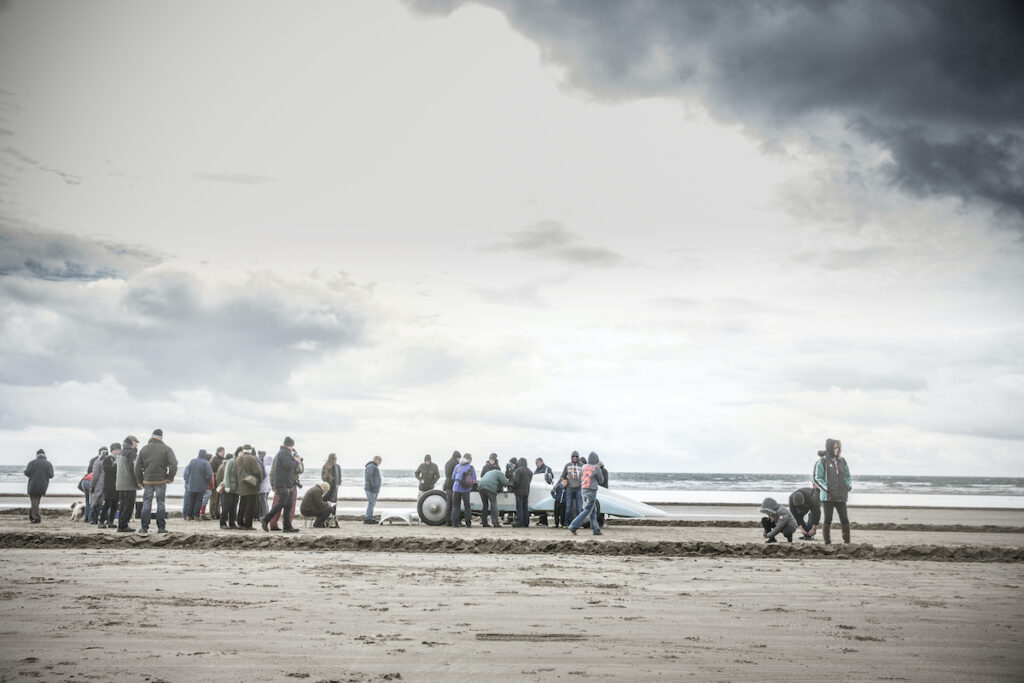
Pushing the button does indeed reward the expectant crowd with some sheets of flame and the immediate burbling blatt characteristic of a WW1-era aero engine running stub exhausts. With spectators now corralled behind a trench ploughed in the sand – which will also help drain away water left by the last tide – Geraint dons a pair of what look suspiciously like university-issue safety glasses, lets out the clutch and eases Babs away to his turning point at the end of the course.
Babs is running a ‘short’ circuit today, because the Army has owned most of Pendine Sands since WW2 and still uses it as a live firing range. With a straight that’s now measured in a few hundred yards rather than the seven miles available to Parry Thomas, Geraint will barely be able to get out of second gear – even though he’s reduced the drive sprockets in size, for the sake of drivability and to preserve the clutch when moving off – but the sight of Babs hammering along the sand, puffing faint clouds of black oil-smoke, is a stirring one.
While the straightline speed inevitably has to be reined in, you can see the car moving around on the sand as Geraint accelerates away from each 180º turn, controlling the oversteer with the instinctive ease that comes from years of racing old cars. As he says later: ‘It has lots of power and no brakes – what’s not to like?!’
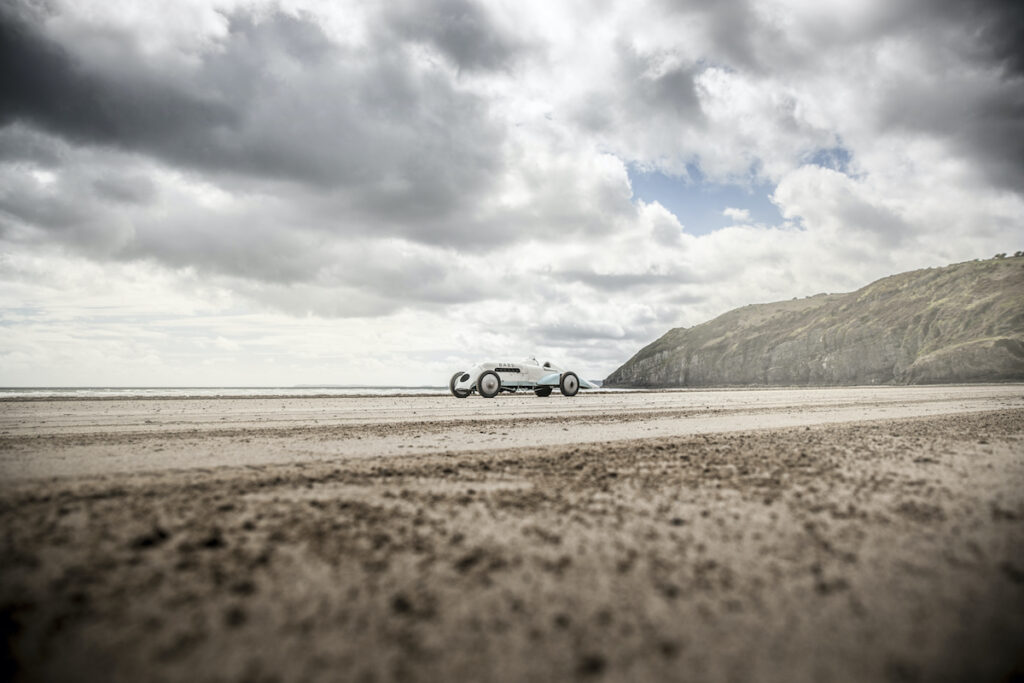
Without doubt, one of the reasons that Babs captured the public’s attention following its resurrection in 1969 was because of the horrific way in which Parry Thomas died, his neck reputedly almost severed by the offside driving chain after it broke at high speed.
‘People have always been fascinated by his death, the idea of the chain coming up and hitting him in the face,’ admits Geraint. But he is not at all convinced that the chain killed Thomas. ‘At some point during the accident, the rear offside wheel collapsed, and at some point the chain broke. Either would result in the car yawing and lead to a rollover. We’ll never know what caused that: whether it was the car hitting a patch of wet sand, or the chain breaking; whatever.
‘The offside of Babs was squashed flat, but what no-one realised during the inquest – and which was only revealed when my father restored the car – was that there was no hole in the top of the valance that covered the chain. There was a hole in the bottom, however, suggesting that the broken chain had flailed below the car – as chains tend to do when they break on the overrun. There’s no way it can have come up and hit Thomas in the face.’
Soon after the accident, the wreckage was inspected by Thomas’s friend and noted engineer Reid Railton, who spotted a mark on the leading drive sprocket. He realised that this had to have been made by something harder than the metal of the sprocket – such as a wheel spoke. He concluded that the rear wheel had collapsed and thrown a spoke into the sprocket, thus breaking the chain.
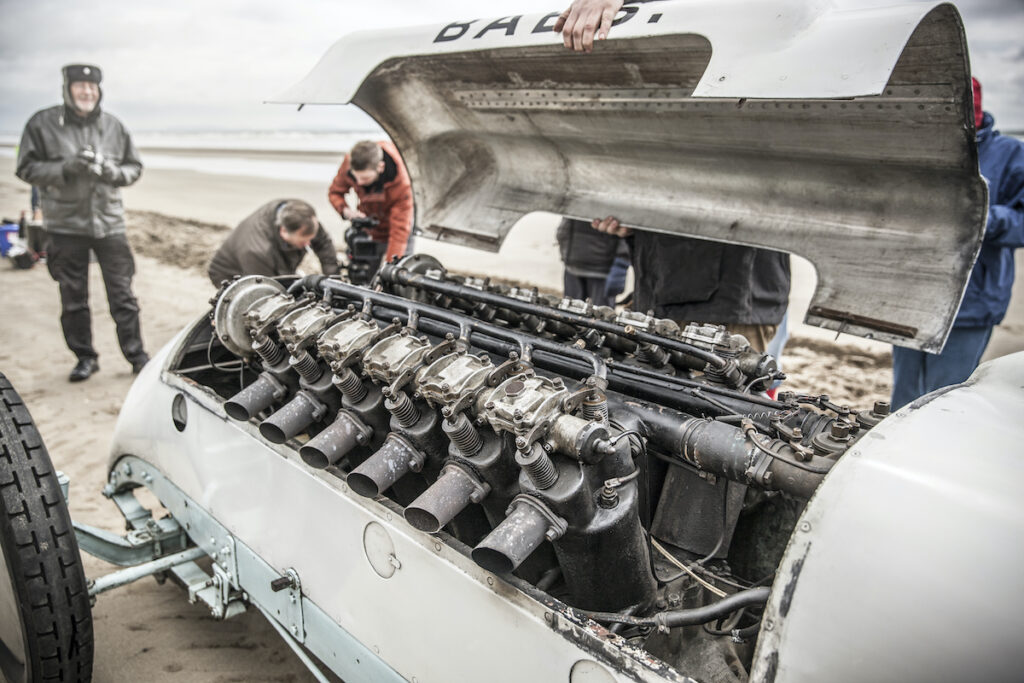
It’s a clever theory, apart from one minor problem. ‘There’s no mark on either sprocket now, and there wasn’t when the car was dug up,’ explains Geraint. ‘The sprockets weren’t rusty and my father went over them very carefully at the time, as I have done since. That doesn’t mean there wasn’t a witness mark left at the time, of course – it could have been no more than a shiny line – but it’s certainly
not there now.
‘Either way, it doesn’t really matter exactly how Thomas died. The car was travelling at well over 100mph and it turned over. The result was always going to hurt.’
PARRY THOMAS was one of those curiously British motoring eccentrics: ascetic, not totally at ease in social situations, and devoted to their first love of machinery and motor racing. During the 1920s he lived in a bungalow located inside the Brooklands track. Appropriately, it was named The Hermitage.
Born in 1884 to a church-curate father on the Welsh borders, Thomas studied electrical engineering and, in his early twenties, patented an electrical transmission for trucks. That led to a job at Leyland Motors, where his passion for speed soon eclipsed any interest in commercial motors. Thomas designed the huge, and hugely expensive, Leyland Eight tourer, launched at Olympia in 1920 and powered by a straight-eight that he designed with the help of Reid Railton – the man who later witnessed the aftermath of that fateful day at Pendine.
Despite the antipathy of his bosses at Leyland, Thomas couldn’t resist stripping the Eight down to take it racing at Brooklands. Its size and power were advantages in setting speed records, and from 1922 onwards he became increasingly obsessed with this objective. While he had the advantages of skill as both an engineer and a driver, he lacked the equally important resource of funding. So when, in 1924, the opportunity came up to buy the ex-Count Louis Zborowski Higham Special from the late Count’s estate at a knock-down price, he saw a way of achieving his ambitions at minimal cost. The 27-litre Higham Special was reputedly bought for just £125.
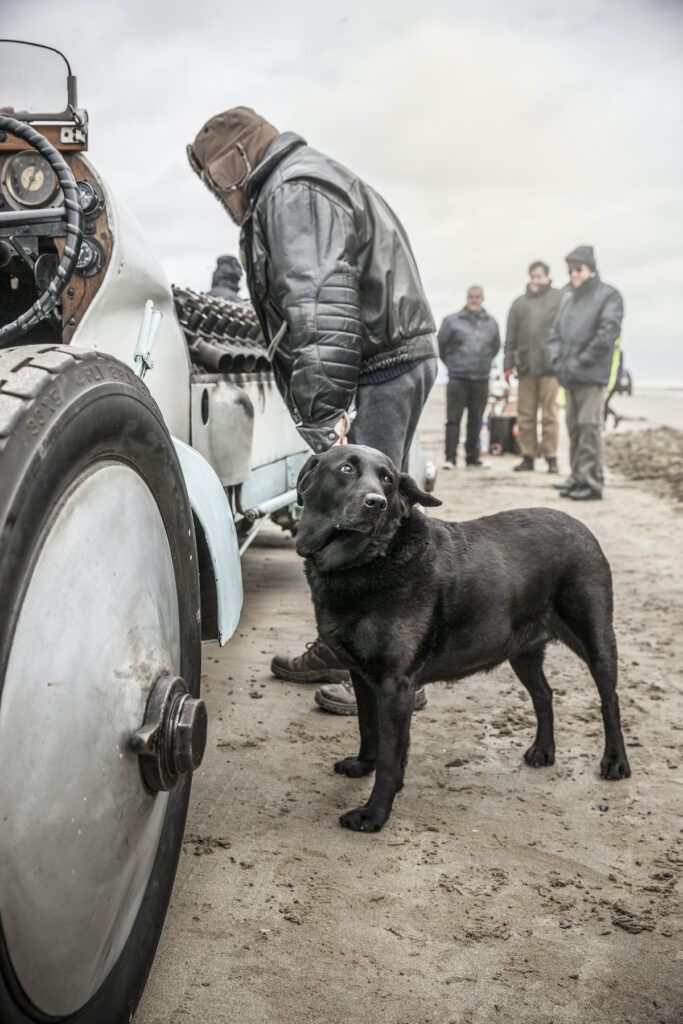
Thomas renamed the car as Babs, but no-one knows why. He claimed it was because, on seeing the car’s massive Liberty aero engine, a mechanic had ironically chalked the word ‘Baby’ on its side. It’s also been suggested that it was named after some female crush; despite his unprepossessing appearance – Thomas had no time for fashion, always wearing the same dog-eared jumper, and had badly tobacco-stained teeth – he seemed to have a magnetic attraction for pretty women.
The stunning 1920s musical comedy star ‘June’ wrote in her autobiography: ‘He was a truly sweet man… I used to drop into his shed to watch him puttering inside the engine of his big Leyland, or go to the shack and take a nap on the dilapidated old sofa with broken springs… Since he was incapable of small talk and would only sit across the room from me and stare as if I were a creature from Mars, I tried to amuse him with anecdotes about the theatre.’ Nowadays, one suspects, Miss June might be given a rather unflattering ephithet.
Babs was far from being Thomas’s only race car at this time; he still had his much-modified Leyland Eight, now called the Leyland-Thomas, plus access to a Lanchester Forty, and a pair of small-capacity and ultra-low specials dubbed ‘Flatirons’ – one of which still survives in unrestored condition and is Geraint Owen’s next project. Work on Babs was delayed by Thomas having a bad crash in the Leyland-Thomas in August 1925 but in October that year he took Babs to Pendine for the first time, to make an attempt on Malcolm Campbell’s 1924 record of 146.16mph. Bad weather put paid to Thomas’s attempt but in April 1926 he brought Babs – fitted with new bodywork featuring a pointed tail – back to Pendine and trounced Campbell with a new 170.6mph record.
Campbell retaliated by returning to Pendine with his new Napier-engined Bluebird in January 1927 and raising the bar to 174.223mph over the measured mile. There was competition on the horizon elsewhere, too, not least from the forthcoming ‘1000hp’ Sunbeam being built in Wolverhampton for Henry Segrave to drive. Thomas was spurred into going ahead with his own Pendine record-breaking attempt in March 1927, even though he was suffering badly from some kind of flu when he arrived. The result, as we know, was disastrous.
About 100 yards beyond the end of the measured mile, the car skidded and rolled over, before coming to rest right-way-up. Thomas, who had been killed instantly, was pulled from the wreckage as flames licked his feet. A few days later, after the inquest into his death, Babs was towed by tractor up beyond the dunes and tipped upside down into a large hole. It would remain there, largely forgotten, for the next 42 years.
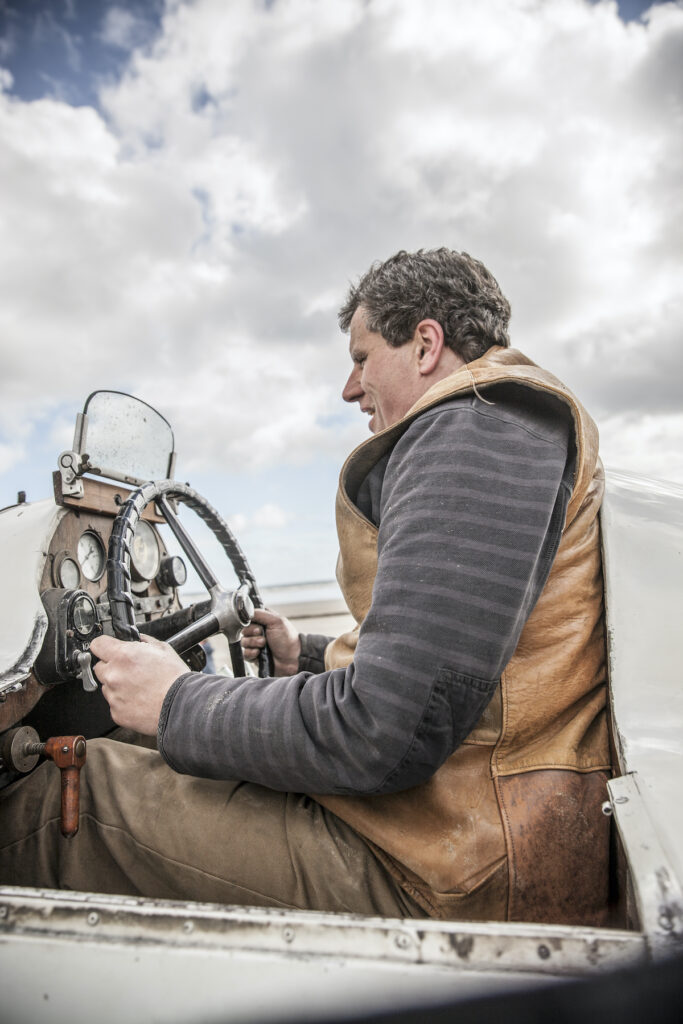
Geraint Owen was less than a year old when Babs arrived at the family home in April 1969. ‘My earliest recollection is of rubbing the corroded tail panels with a piece of emery paper when I was three or four,’ he says.
‘The car was something of a dichotomy. Because the aluminium was bolted to a steel chassis, it acted like a sacrifical anode, dissolving away but in turn preserving the steel. So wherever the bodywork was attached, it had completely disappeared. But that also mean that many of the steel parts had survived incredibly well. You could put your finger through the alloy gearbox casing, it was so soft, yet the steel internals were good enough to re-use. In fact, the original ball races are still in there.
‘The engine was badly damaged; it was reported that the camshaft ends had been deliberately smashed off with sledgehammers to deter souvenir hunters when the car was buried, but the bodywork was so bent by the accident that I don’t think the bonnet could have been removed. To get the chassis running again, father bought a Liberty tank engine – but then he was offered a replacement Liberty aero engine that the harbour pilot in New York had stashed away in a shed. It had come out of a police boat used during Prohibition and it was sent over as unaccompanied hand luggage on the QE2, presumably one of the perks of being the harbour pilot!
‘Father built-up the original engine’s crankcase, crank and rods with the cylinders and camshafts from the donated engine – but in 1986 a rod let go while the car was being driven at Silverstone and wrecked the unit, so the internals from Babs’ original engine were put back into the original crankcase and the whole unit is now in storage at the National Museum of Wales.’
As already mentioned, the gearbox casing had to be replaced. The gearbox was from a 1909 Blitzen Benz, so the chances of finding a spare unit were negligible. Fortunately, British engineering company GKN came to the rescue, by offering to cast a new casing from a pattern made out of the original. ‘Everyone wanted to help,’ says Geraint. ‘The story of Babs captured the imagination in those pre-social media days.’
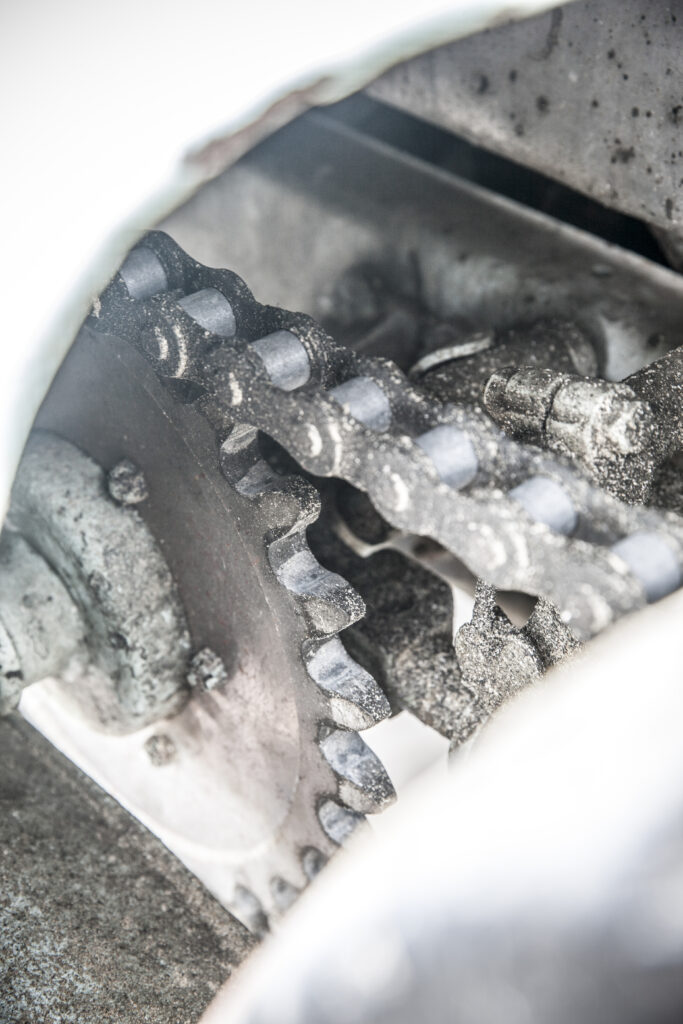
Geraint’s father had the same problem of porosity with the alloy steering box casing, which was also re-cast. ‘It’s the one bit of the car he wasn’t happy with,’ laughs Geraint. ‘He was machining an internal thread at the technical college where he taught, when a student came up to speak with him, he was distracted and messed up the final cut! There’s a bit of internal movement as a result and it’s all just slightly unsatisfactory.’
By the mid-1970s, Babs was drivable as a rolling chassis but work on the car then stalled for a few years. ‘It wasn’t until 1979-80 that he got stuck into the bodywork,’ continues Geraint. ‘Most of it was made by a company up North, who did a reasonable but not brilliant job. It’s also missing details such as the beautiful little shrouds that were originally fitted to the front axle, and it should have a full set of undertrays. All this stuff survives in the store rooms of the National Museum of Wales.’
Hold on a moment – you mean to say that Babs’ original bodywork still exists? ‘Absolutely,’ Geraint confirms. ‘It’s very doggy wherever it attached to the chassis, and there are holes all over the place, but I saw the undertrays a year or two back and they didn’t look any worse than when they were dug up in 1969.’

Surely that raises the tantalising prospect that the original body could be restored… It would be difficult, of course, but far from impossible, as recent triumphs such as the rebuild of the Lindner-Nöcker Lightweight E-type – wrecked in 1964 and superbly restored in 2010, using 90% of the original alloy bodywork – have proved.
Geraint looks wistful at the suggestion.
‘That would certainly be groovy! The world has moved on and if I were to rebody Babs, I would definitely think about doing that. When I saw the undertrays at Swansea, which was the first time since I was a teenager, I looked at them and thought “Yeah, you could restore those”. You’d need to examine the body panels very carefully but I bet it could be done.’
Geraint clearly feels that the time is approaching for Babs to receive a second rebuild. ‘I’d like to repeat what my father did but take it that little bit further.’
Meanwhile you can see Babs run once again at CarFest South, held at Jody Scheckter’s Laverstoke Park Farm on 26-28 August. ‘Because Parry Thomas was such a supporter of children’s hospitals like Great Ormond Street, and because CarFest is in aid of Children In Need, it just seemed like the right thing to do.’
Without a doubt, Thomas would wholeheartedly have seconded that.
Factfile – 1927 Land Speed Record car Babs
Engine 27,000cc Packard-built Liberty V12, SOHC per bank, four sidedraught Zenith carburettors on Thomas-built inlet manifolds Power c600bhp @ 1800rpm Transmission Four-speed manual, chain drive to rear wheels Steering Worm and peg Suspension Beam axles, semi-elliptic springs, André Hartford friction dampers Brakes Footbrake on transmission, handbrake on rear wheels Weight 1750kg with fluids Top speed c180mph (unofficially timed at Pendine in 1927 before crash)
This article was originally published in Octane 159, September 2016
